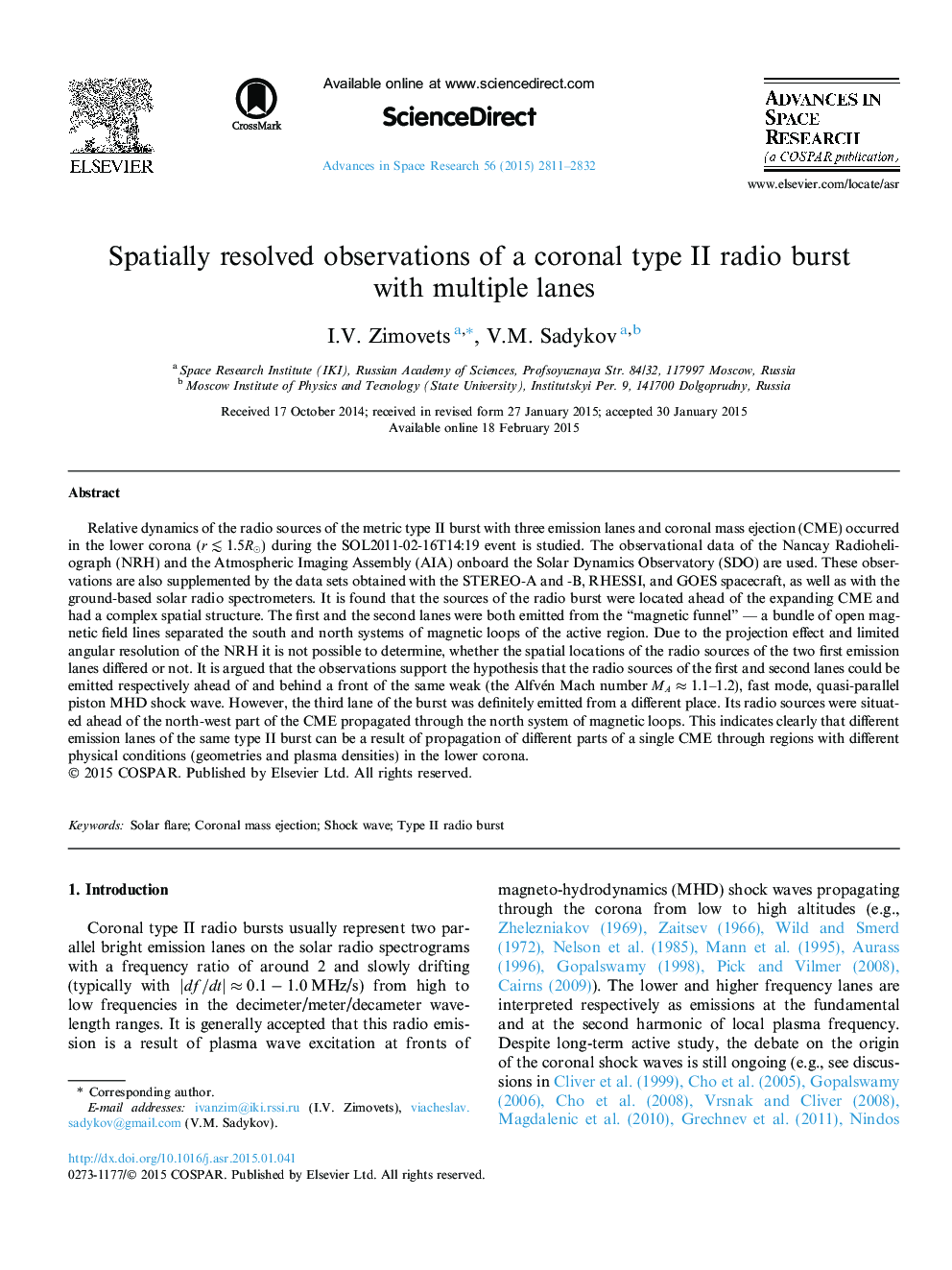| کد مقاله | کد نشریه | سال انتشار | مقاله انگلیسی | نسخه تمام متن |
|---|---|---|---|---|
| 1763516 | 1020007 | 2015 | 22 صفحه PDF | دانلود رایگان |
عنوان انگلیسی مقاله ISI
Spatially resolved observations of a coronal type II radio burst with multiple lanes
ترجمه فارسی عنوان
مشاهدات مکانی از یک نوع رادیویی نوع کرونالی با خطوط چندگانه حل شده است
دانلود مقاله + سفارش ترجمه
دانلود مقاله ISI انگلیسی
رایگان برای ایرانیان
کلمات کلیدی
تابش خورشیدی، اخراج جرم کرونال، موج شوک، نوع دوم رادیویی،
موضوعات مرتبط
مهندسی و علوم پایه
علوم زمین و سیارات
علوم فضا و نجوم
چکیده انگلیسی
Relative dynamics of the radio sources of the metric type II burst with three emission lanes and coronal mass ejection (CME) occurred in the lower corona (râ²1.5Râ) during the SOL2011-02-16T14:19 event is studied. The observational data of the Nancay Radioheliograph (NRH) and the Atmospheric Imaging Assembly (AIA) onboard the Solar Dynamics Observatory (SDO) are used. These observations are also supplemented by the data sets obtained with the STEREO-A and -B, RHESSI, and GOES spacecraft, as well as with the ground-based solar radio spectrometers. It is found that the sources of the radio burst were located ahead of the expanding CME and had a complex spatial structure. The first and the second lanes were both emitted from the “magnetic funnel” - a bundle of open magnetic field lines separated the south and north systems of magnetic loops of the active region. Due to the projection effect and limited angular resolution of the NRH it is not possible to determine, whether the spatial locations of the radio sources of the two first emission lanes differed or not. It is argued that the observations support the hypothesis that the radio sources of the first and second lanes could be emitted respectively ahead of and behind a front of the same weak (the Alfvén Mach number MAâ1.1-1.2), fast mode, quasi-parallel piston MHD shock wave. However, the third lane of the burst was definitely emitted from a different place. Its radio sources were situated ahead of the north-west part of the CME propagated through the north system of magnetic loops. This indicates clearly that different emission lanes of the same type II burst can be a result of propagation of different parts of a single CME through regions with different physical conditions (geometries and plasma densities) in the lower corona.
ناشر
Database: Elsevier - ScienceDirect (ساینس دایرکت)
Journal: Advances in Space Research - Volume 56, Issue 12, 15 December 2015, Pages 2811-2832
Journal: Advances in Space Research - Volume 56, Issue 12, 15 December 2015, Pages 2811-2832
نویسندگان
I.V. Zimovets, V.M. Sadykov,
